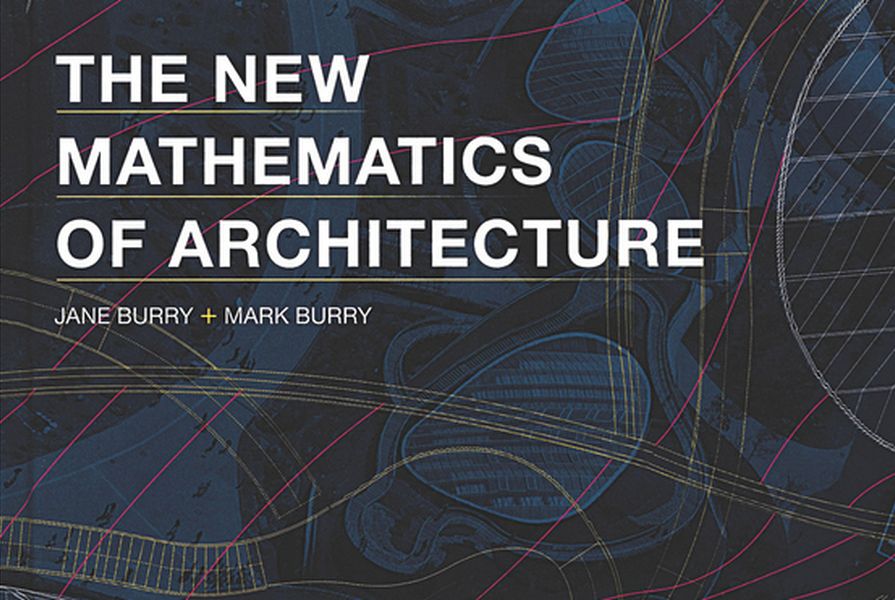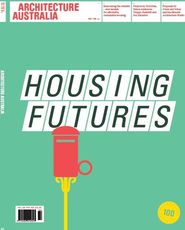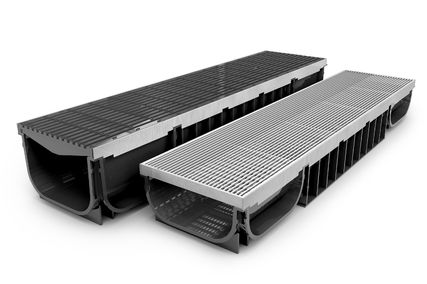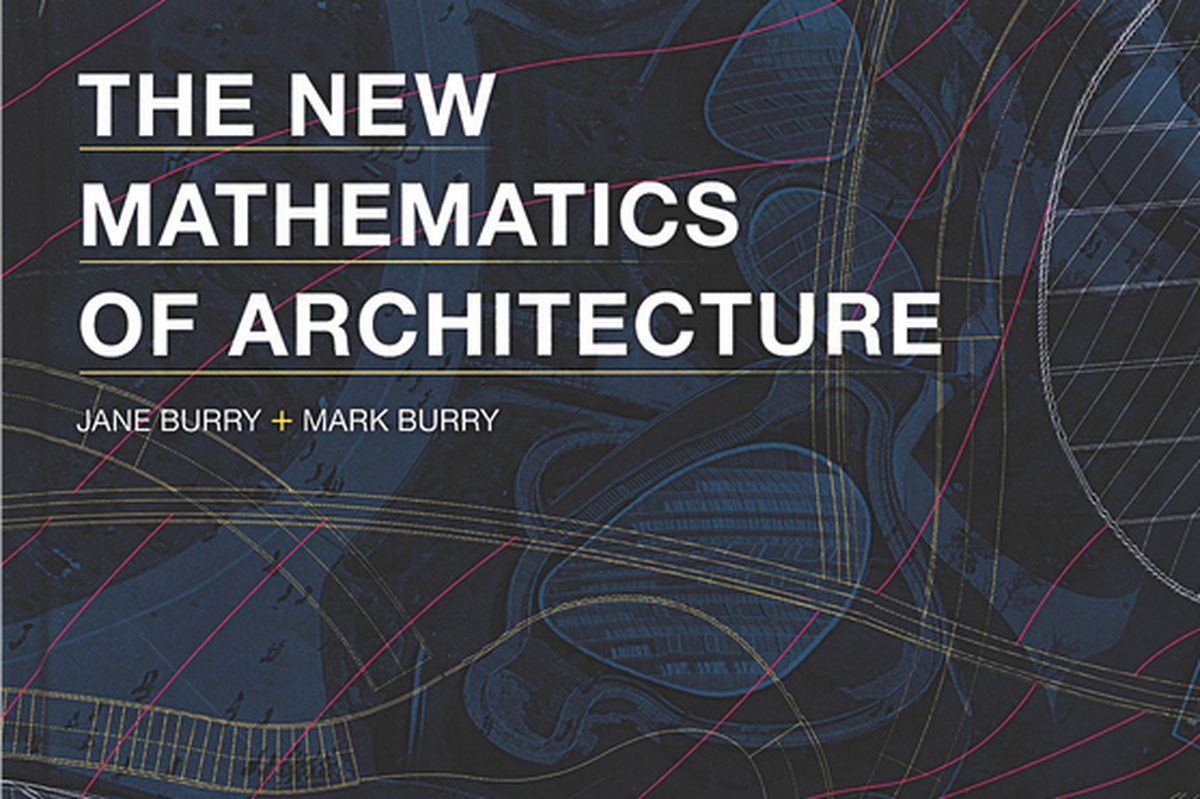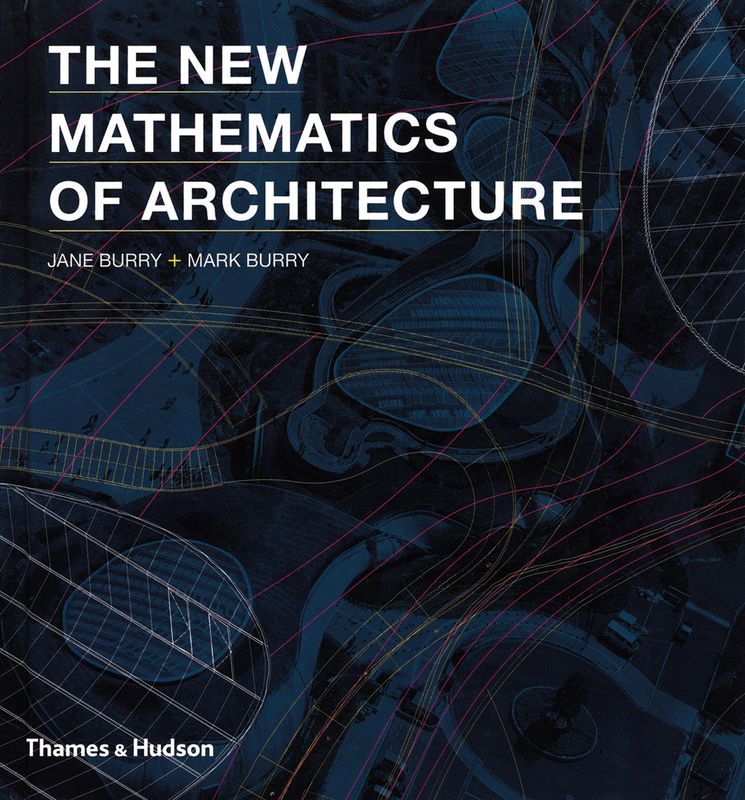Jane and Mark Burry have established their authoritative position on computational and digital architecture over the course of the last twenty years. With the release of their new book, The New Mathematics of Architecture, their unique perspective captures a moment of transition in this area, from software to space, from fringe to mainstream, that simultaneously summarizes the second wave of computational work in architecture and creates an authoritative reference text and guide.
The title of the book intelligently sidesteps the usual digital classification of this genre of work. A handy moniker for the later part of the nineties in understanding largely software-based practices vs. analog (traditional) practices, the digital conversation has matured considerably and requires a revised frame of reference that leaves behind these old antagonisms. I find The New Mathematics of Architecture somewhat awkward as a title, although absolutely astute in capturing the commonalities underlying the proliferation of current design processes and practices in architecture - dependent not on new technologies per se, but on new conceptions of mathematically defined space and our ambitions as architects to explore this realm for its spatial potential. Through linking computation in design back to fundamental concepts of architecture in geometry and mathematics, the authors set the stage for a broader, less (technically) fringe debate in architecture about the merits of this kind of design work and experimentation that draws on the depth of our discipline.
The ambitions of this book are, I believe, twofold. One is to bring the current array of digital practices in architecture into a more mature phase by using case studies from fifteen years’ worth of predominantly built works. The case study format of the book is an interesting choice and unlike much written in this area that tends toward the partial example or the esoteric. With fewer “virtual” or speculative projects included in the book, a focus on built examples and material outcomes allows a clear mapping against more normative architectural practices. This opens up the conversation to those who remain uncomfortable with speculative or unbuilt works, and allows debate about the values of the new spatial concepts in architecture in terms of broader architectural aims.
The second ambition is to begin to delineate and organize a second generation of computational work, recognizing the progression from experimentation with software in the early nineties, through the exploratory material- and information-based experiments of the last decade. This book makes clear that computational or digitally driven architecture cannot be understood as one thing. Rather, it is a growing and complex environment of ideas and approaches, practices and techniques that are no longer able to be lumped under one heading. The taxonomic approach follows the lead of Tooling by Benjamin Aranda and Chris Lasch (Princeton Architectural Press, 2005), a small pamphlet publication where an attempt to classify computationally driven design processes first made an impact in design studios across schools of architecture. The author’s structure takes this strategy another step into a larger arena that includes generative, analytic and information-based practices in architectural design, through a decade of built works.
The book is organized into six subheadings, developing from the more generative genres of contemporary digital work in the first three chapters - Mathematical Surfaces and Seriality; Chaos, Complexity, Emergence; and Packing and Tiling - to the more analytical themes of Optimization and Topology. The book ends with a chapter on Datascapes and Multidimensionality, which collects case studies that operate in a more proto-architectural, information-based realm. Not to be confused with BIM or other technically oriented discussions in architecture, the book is aimed squarely at design thinking. In this sense, it operates as a design resource and openly questions where new mathematical concepts of space in architecture will develop from here.
The book’s audience is what I would classify as “pro-sumer”, sitting somewhere between the professional or well-schooled computational practitioner and the consumer or interested browsing novice. Its format allows for “dipping in”, without requiring time spent with overly esoteric or technical texts. For the more professional audience, the collection of case studies and their appropriate depth establishes foundations for more developed conversations outside the book. The descriptive texts accompanying the projects, however, do not attempt to unpack the examples with any real depth or criticality. Clearly a balance has been struck between breadth of examples and depth of analysis, but one which left me wanting more critical commentary or positioning from the authors themselves, whose voices carry considerable weight in the field.
The glossary of the book deserves special mention, as it is on its own a worthy summation of practices, processes and concepts that are indexed to each of the case studies. This is an excellent means of reinforcing the common underpinning in process and mathematical logics of the case studies presented, while bringing context to their understanding and clarity to their eventual application. As a teaching aid alone this section is worth spending time with, but its real value is in clearly articulating and making available the range of computational processes and conceptual approaches developed over the last decade to a larger set of design-driven architectural practices, while allowing a more intelligent evaluation and grounded discussion within the discipline to emerge.
Jane Burry and Mark Burry, Thames and Hudson, 2010, 272 pp., rrp $80.

